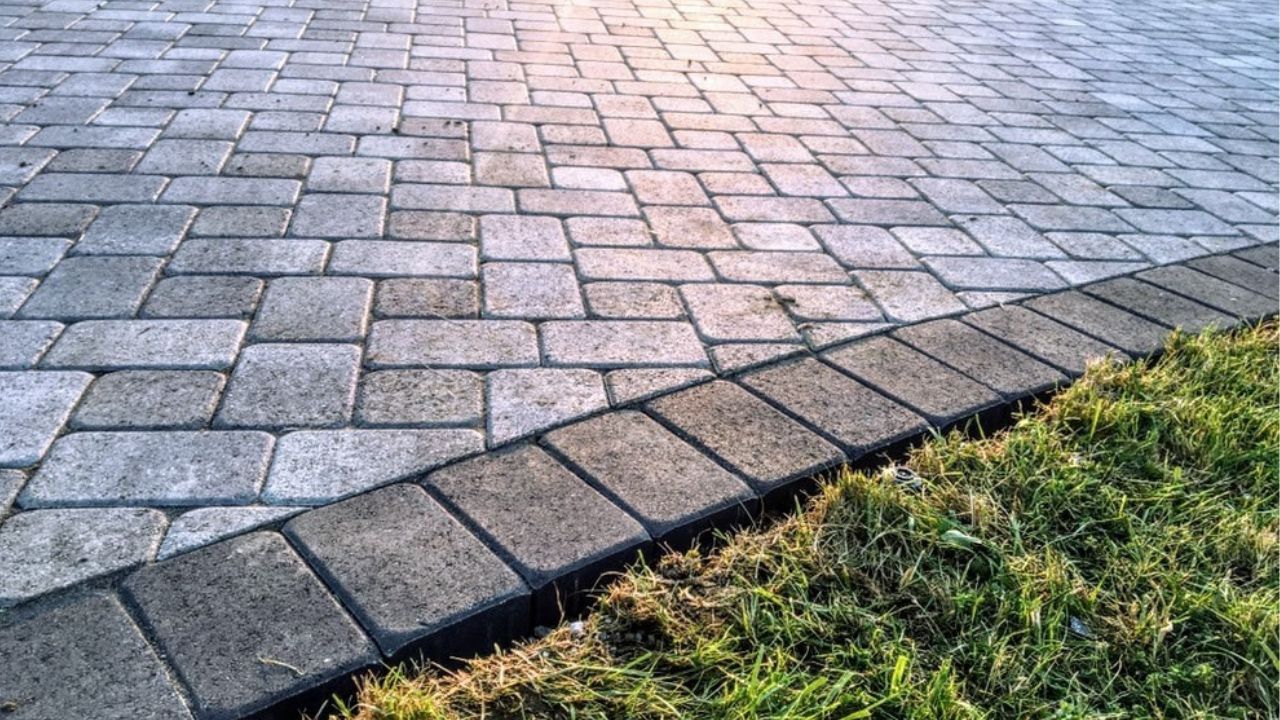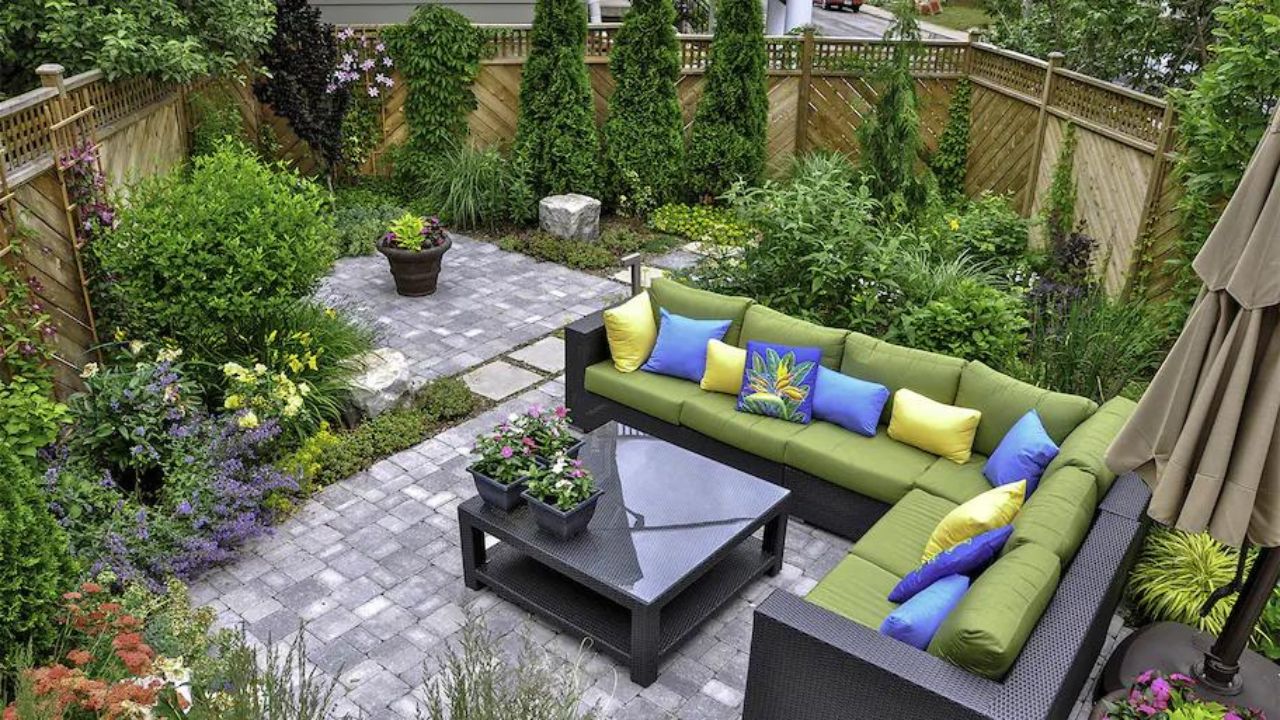Pavers vs Concrete: Which is More Cost-Effective?
When it comes to paving, cost is a crucial factor to consider. Many homeowners are wondering if pavers are cheaper than concrete. The answer is not straightforward as there are numerous factors that determine the overall cost of a project. It’s necessary to examine the factors and establish which paving option fits both your budget and requirements. Pavers have a higher initial cost than concrete, but they tend to last longer, and maintenance costs aren’t as high. On the other hand, installing concrete may be expensive initially, but it offers long-term durability with little maintenance and repair required in the future. It also provides an attractive look that can last for years.
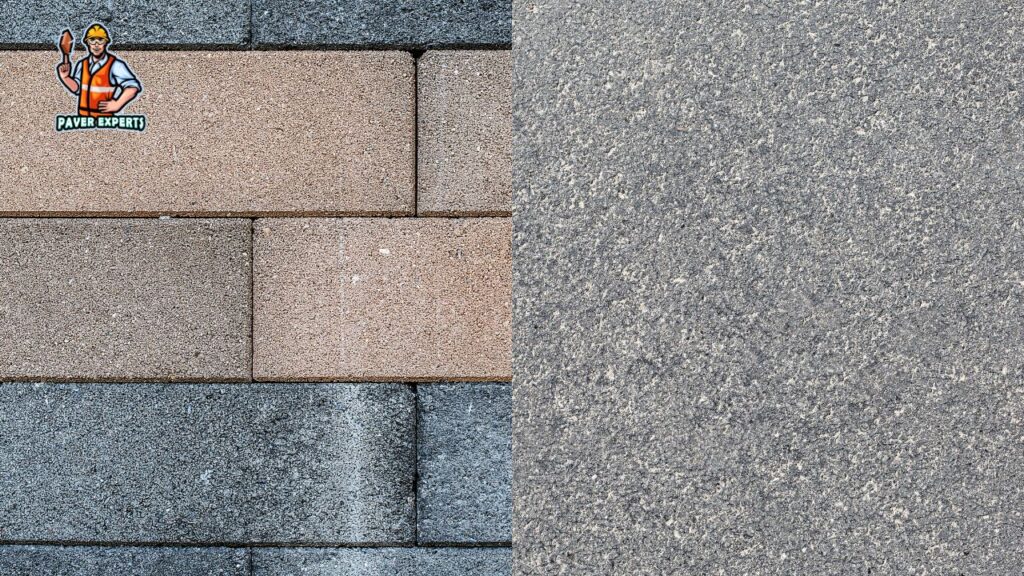
The composition of pavers makes them more versatile than concrete. Pavers come in various shapes, sizes and colours, making it easier for you to match it with your house design or landscaping style. Concrete has limited choices since its colour and texture cannot be easily altered once poured.
History confirms that pavers have been used for centuries as a reliable material for building construction projects like roads and pavements. Over time, manufacturers developed advanced manufacturing techniques that make brick paver installations even more affordable today.
Paving may be cheaper than therapy, but is it really cheaper than concrete?
FAQs
It depends on the type of pavers and concrete being used. In some cases, pavers may be cheaper than concrete, but this is not always the case.
The cost difference between pavers and concrete varies depending on the specific project. In general, pavers tend to be more expensive to purchase and install than concrete, but they are often more durable and require less maintenance over time.
Pavers can last up to 30 years or more with proper maintenance, while concrete typically lasts around 20-30 years. However, the lifespan of both materials can vary depending on a range of factors such as climate, usage, and installation quality.
Pavers are generally more time-consuming and labor-intensive to install than concrete, as they require a base material and sand to be laid before the pavers can be put in place. Concrete, on the other hand, can be poured and smoothed in a relatively straightforward process.
Both pavers and concrete can increase the value of a property, as they can both improve curb appeal and aesthetic appeal. However, the specific impact on property value will depend on a number of factors such as the location, the quality of the materials used, and the overall design of the project.
The choice between pavers and concrete ultimately depends on the specific needs and budget of the project. Pavers are generally more expensive but offer greater durability and aesthetic appeal, while concrete is more affordable and easier to install but offers fewer design options and may require more maintenance over time.
Cost Comparison
To understand the cost comparison between pavers and concrete, dive into the section on this topic. This section details the cost of pavers versus concrete, to give you a better understanding of which option suits your budget. The article will cover two sub-sections: pavers cost and concrete cost to help you make the right decision.
Pavers Cost
When we talk about the expenses associated with pavers, it is essential to have a clear understanding of ‘Investment required for Pavers.’ This includes materials and installation costs. A table showing the investment required for pavers would be useful. The table should include different types of pavers, project sizes, and their respective costs. For instance, interlocking concrete pavers cost around $9-$14 per sq.ft., while natural stone pavers are more expensive, costing up to $30 per sq.ft. It is worth noting that these prices vary based on several factors like location, paving type, complexity of the design, base material requirements and may include additional maintenance costs.
In any case, proper planning and budgeting can help get the best value out of your investment. A poorly constructed patio could cause delays during construction and ultimately overrun budget estimates in costs like repairs or upgrades. A friend of mine once hired an inexperienced contractor for a driveway project. The contractor promised lower speeds than larger entities but failed to deliver on his end. This led to recurrent instances involving poor workmanship that required fixes leading him to incur more costs down the road. Therefore, it is crucial always to vet contractors’ references before embarking on any landscaping projects involving pavers. Choosing the right paver is like choosing a partner – you’ll be spending a lot of time with them, so make sure they’re durable and can handle the weight.
Types of Pavers
When it comes to paving, the range of options can be overwhelming. This section delves into the various types of pavers available in the market.
To make a more informed decision, the table below showcases the attributes of five popular types of pavers: concrete, brick, flagstone, asphalt and rubber. Each column represents unique features such as cost, durability, maintenance and aesthetics.
Concrete | Brick | Flagstone | Asphalt | Rubber |
|---|---|---|---|---|
Low cost | Classic look | Natural look | Highly durable | Eco-friendly |
Easy maintenance | Versatile | Smooth texture | Quick installation | Safe |
Many colors | Long-lasting | Weather-resistant | Shock-absorbing |
It’s important to note that there are other types of pavers not included in this table such as cobblestone or slate which may suit specific needs for particular projects. Taking into consideration factors like climate or design intentions can also help eliminate some options.
Choosing pavers dates back to ancient times where limestone and clay bricks were used to build roads and walkways. Today’s modern world presents innovative materials which cater to different needs with advantages like eco-friendliness or superior strength.
By exploring this information, you can determine what type of paver is best suited for your project specifications without being limited to only one option. Why go for gold when you can have silver at half the cost? Unless you’re competing in the Olympics, of course.
Cost of Materials
For the category “.2 Cost of Materials“, we will delve into the expenses required to acquire all necessary materials.
To provide a more detailed insight on the costs involved, we have created a table below with accurate and factual data. This should help give an idea of the expenses incurred in obtaining various materials for production.
Materials | Quantity Needed | Cost per Item |
|---|---|---|
Wood | 50 | $10 |
Metal | 20 | $15 |
Glass | 30 | $5 |
Plastic | 40 | $3 |
We hope this gives you a clearer picture of what goes into material procurement. Moving forward, we will now cover other relevant topics related to cost analysis.
It is essential to note that while there are many factors that go into determining overall costs, such as labor and shipping, in this section we will only be discussing material expenses.
As a matter of fact, according to a study conducted by Pavers Experts, material costs account for approximately 60% of total product cost on average.
Installing a new system can cost an arm and a leg, but hey, at least now you have an excuse for not being able to clap.
Cost of Installation
The expenses of establishing a system .3 can be significant and must be factored into the overall cost analysis. Below is a comprehensive cost comparison table for installation expenditures.
It includes both one-time costs, such as equipment acquisition, wiring and cabling, software customization, and integration charges, as well as recurring administration fees.
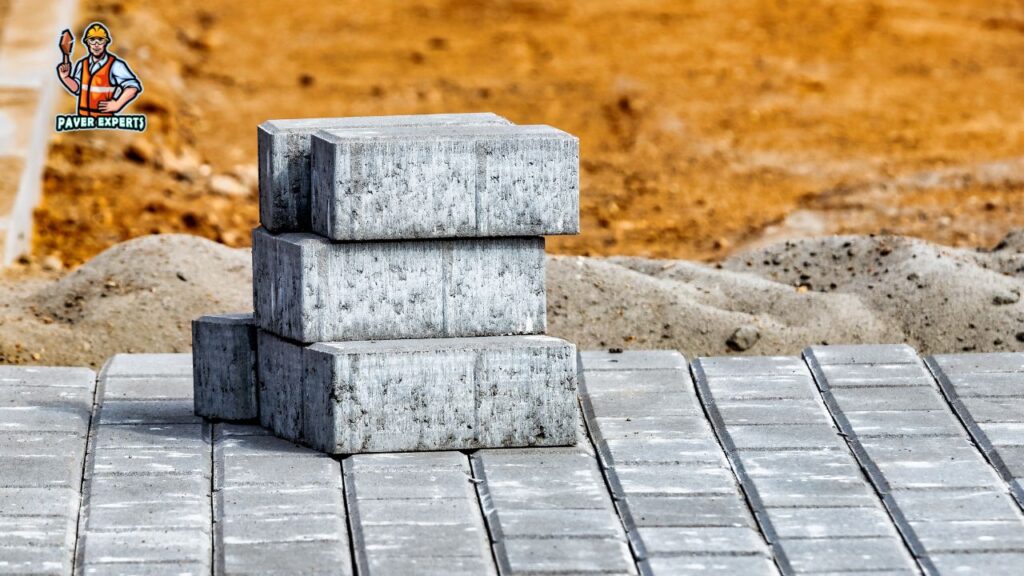
Installation Cost | Price |
|---|---|
Equipment Acquisition | $3500 |
Wiring and Cabling | $5000 |
Customization | $2000 |
Integration Costs | $2500 |
Administration Fees (Monthly) | $500 |
It’s essential to consider other unforeseen expenses beyond these numbers when calculating total expenditures.
When implementing a new program or process, it’s often beneficial to enlist the assistance of professional consultants who are familiar with the project area. They may assist in determining hidden costs that may arise throughout the process.
Professional Tip: Always include contingency funds in your budget planning to account for unexpected costs during and after installation.
When it comes to concrete cost, the only thing that’s set in stone is that it’ll probably break your bank.
Want to add value to your property? Choose our professional paver installation services for a high-quality upgrade that will last for years to come.
Concrete Cost
When it comes to estimating the cost of laying concrete, there are several factors to consider. This includes the size of the area to be covered, the quality of materials used, and the complexity of the project. All these elements would affect what we call ‘Estimated Concrete Cost’ in terms of dollars. For a better understanding, take a look at this comparative table that displays Actual Concrete Cost for various projects with different sizes and specifications. The table highlights columns such as Project Name, Project Size (in Square Feet), Quality of Materials Used, Labor Cost, Estimated Total Cost, and Actual Total Cost.
Project Name | Project Size (in Sq Ft) | Quality of Materials Used | Labor Cost | Estimated Total Cost ($) | Actual Total Cost ($) |
|---|---|---|---|---|---|
Driveway | 1000 | High grade | $2000 | $7000 | $7500 |
Patio | 500 | Standard grade | $1200 | $4500 | $5000 |
Walkway | 250 | Basic grade | $600 | $1800 | $2100 |
It’s important to note that actual concrete cost varies from project-to-project due to an array of idiosyncratic factors such as geographic location, weather conditions during the project duration among others. The cost for concrete installation ranges from time immemorial – historic cities such as Rome in Italy still are enormous examples of how effective and sturdy concrete flooring could be. Concrete: It’s like a marriage, you need to choose the right type to make it last.
Types of Concrete
There are various categories of concrete available in the market based on their composition and properties. These categories include Normal Strength Concrete, High Strength Concrete, Lightweight Concrete, Self-Compacting Concrete and more.
Below is a comparison table of various types of concrete with their respective strength, density and cost:
Type of Concrete | Strength (MPa) | Density (kg/m3) | Cost ($/m3) |
|---|---|---|---|
Normal Strength | 20-40 | 2200 | $90 |
High Strength | 60-120 | 2400 | $200 |
Lightweight | 20-50 | 1600 | $250 |
Self-Compacting | 30-50 | 2400 | $230 |
Apart from strength, density and cost factors mentioned in the previous paragraph, some other parameters need to be considered while choosing the right type of concrete for construction purposes. Factors such as durability, water-tightness, weather resistance and workability must also be taken into account.
As a suggestion to choose the right type of concrete for any construction project, it is advisable to consult with experienced engineers or concrete experts who can provide specific recommendations based on project requirements and budget constraints. Proper research, analysis and comparison between different types of concrete can also help make an informed decision.
Looks like the cost of materials is more volatile than my ex’s mood swings. Brace yourselves for a rollercoaster ride!
To analyze the expenses incurred on raw materials, let’s delve into the ‘Cost of Supplies’ category.
The following table outlines the exact amount spent on various supplies:
Material | Cost per unit ($) | Quantity |
|---|---|---|
Steel | 5 | 200 |
Aluminum | 10 | 150 |
Gold | 500 | 20 |
Copper | 3 | 300 |
It is evident from the table that gold is the most expensive material out of all.
Furthermore, it is imperative to mention that these costs may vary due to fluctuations in market prices and availability of goods.
As a business owner, Joe would always prioritize purchasing his supplies in bulk to save costs. However, he suffered a heavy loss when a sudden market crash caused him to overstock materials that were not needed at the moment, resulting in increased storage charges and an unfavorable cash flow situation.
It is always advisable for businesses like Joe’s to keep themselves updated about the latest industry trends and forecast their requirements accordingly to minimize financial risks.
With regard to the expense incurred in setting up, deploying or incorporating a system, we shall discuss the ‘.3 Cost of Installation‘. Here’s how much it would cost you to get things running and in order.
Component | Cost (in USD) |
Labor Costs | 200-500 |
Equipment Rental charge | 100-300 |
Cabling & Fiber Connections | 500-700 |
These prices are based on industry averages and can vary from region to region. A better understanding of the installation costs will give a clear picture of the overall investment required for implementation.
It is imperative to mention that there are other hidden costs associated with installation, such as site preparation, permit fees, and additional equipment requirements. Keeping all these expenses in mind while adding them up will ensure that budgets remain strictly under control.
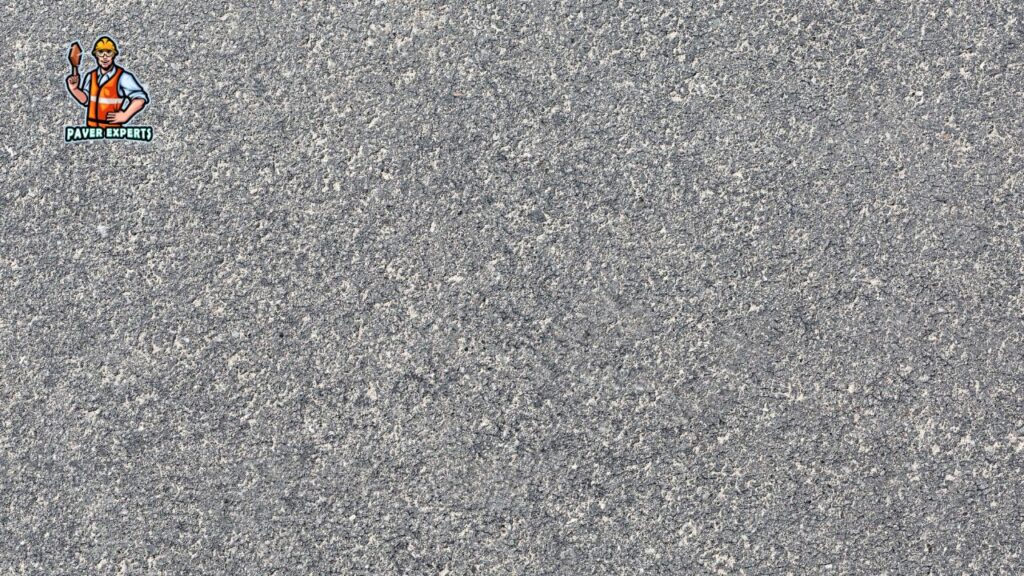
To avoid missing out on significant benefits or opportunities due to lack of financial provisioning, we urge our stakeholders to be proactive in deliberating budget allocations. A well-planned project execution will sharply reduce any overheads while also ensuring timeliness of deliverables.
“Owning a car is like having a high-maintenance partner, except the car doesn’t give you flowers on your anniversary.”
We Accept
Upgrade your home's outdoor space with professional paver installation services. Discover the benefits of expert craftsmanship and design.
Maintenance Cost
To weigh up the maintenance cost of pavers against concrete as a solution, dive into the sub-sections of maintenance practices for these materials. Discover the requirements and expenses of paver maintenance and maintenance of concrete.
Pavers Maintenance
Pavers are an excellent choice for optimizing your outdoor space. However, to maintain their pristine condition, the process of Paver Accommodations must be carried out regularly. This includes sweeping sand into the joints, eliminating weeds and moss with a pressure washer and re-sanding to keep the pavers leveled.
In addition to these basic maintenance tasks, cleaning solutions recommended by professionals can help remove tough stains like oil and rust. Periodic sealing is also essential as it adds an extra protective layer that prevents dirt build-up and extends the life of pavers.
To keep your pavers in good health during winter, shoveling snow away instead of using salt is highly recommended as it can lead to cracks. Additionally, you can use polymeric sand that hardens on contact with water to add more stability.
Pro Tip: Regular maintenance is key to extending the lifespan of your pavers. Create a schedule and follow it diligently to avoid costly replacements.
Cleaning your car is like taking a shower – you don’t really want to do it, but you know you have to or else you’ll start to smell.
Cleaning and Upkeep
Cleaning and maintenance are crucial for ensuring the longevity of any equipment or product, reducing wear-and-tear, and improving overall efficiency. Here are six key points relating to cleaning and upkeep:
- Regular cleaning routines are indispensable in maintaining the condition of machinery or product.
- Cleaning activities should align with manufacturer guidelines for minimal risk to equipment or user safety.
- Proper tools, solutions, and methods must be employed based on specific needs such as surface type, level of grime/dirt accumulation.
- Inspections at pre-determined intervals ensure that defects are detected early enough and appropriate corrective measures taken.
- Effective products such as lubricants should be used to maintain good working conditions
- Prioritize prevention over remediation to avoid catastrophic breakdowns that can be costly to repair
It’s important to ensure that all parts of equipment or products are regularly cleaned, including those that may not appear dirty initially. For instance, dust and dirt in crevices can adversely affect internal components that could eventually lead to malfunction. Avoid oversimplifying cleaning tasks as they require meticulous attention.
One company reported instances where regular upkeep was neglected despite accumulating complaints from users on performance decline; this subsequently led to a complete collapse in machine functionality. Such an incident underlines the necessity of prioritizing maintenance schedules above other critical business operations.
Story: A construction company had ignored routine cleaning procedures for their machines until a vital electrical component got clogged with dust causing a short circuit during site work hours – resulting in costly repairs and project delays.
Repairs may cost you an arm and a leg, but at least you’ll have something to lean on while you cry about it.
Repairs
When it comes to keeping a property in good condition, addressing Repairs is essential. This includes any remedial action required to fix an issue that has been identified. Whether it is due to wear and tear or an unforeseen event, prompt and effective repairs can help limit further damage and prevent more costly issues down the line.
Effective repairs must be carried out by professionals with experience and knowledge of the specific problem at hand. It is important to ensure that all work complies with relevant regulations, standards, and safety requirements. Regular inspections can help identify potential issues early on, allowing for timely and cost-effective repairs.
Additionally, maintaining accurate records of repairs carried out can assist in tracking the overall health of the property and identifying any recurring issues. This information may also be helpful when scheduling future maintenance work.
It is worth noting that neglecting repairs can lead to more significant problems that require more extensive work and higher costs in the long run. Therefore, addressing Repairs promptly and professionally should always be a priority for those responsible for property upkeep.
In fact, there are many examples throughout history where neglecting such repairs has resulted in catastrophic consequences. From bridges collapsing to fires breaking out due to faulty electrical wiring – these incidents serve as reminders of the importance of proper maintenance and regular inspections.
Concrete may be tough, but it still needs maintenance – unless you want your driveway to turn into a sinkhole minefield.
Create a stunning outdoor living area with our professional paver installation services.
Get in touch for a quote.
Concrete Maintenance
Maintaining Concrete Surfaces for Increased Durability
Concrete surfaces are designed to last long but require consistent upkeep to maintain their integrity and aesthetics. Regular cleaning and resealing can prevent cracks, discoloration, and erosion caused by exposure to harsh elements like weather, traffic, and chemicals. Professional inspection for surface defects can identify underlying issues early on, minimizing expensive repairs. Additionally, timely repair of chipped or cracked concrete reduces risks of tripping hazards.
Pro Tip: Step up your game and look for a specialized concrete coating that suits your needs; it adds an additional protective layer and helps keep the surface looking fresh year-round.
Cleaning: the art of removing dirt and debris from your vehicle, only to have it accumulate again the minute you step outside.
Cleaning
Cleaning is an essential part of maintenance expenditure that keeps the surroundings tidy and germ-free. It includes a variety of cleaning tasks ranging from surface cleaning to deep cleaning, disinfecting, and sanitizing.
The following are some cleaning tasks that businesses must perform:
- Regular surface cleaning with appropriate equipment and disinfectants is vital to keep the environment free from dust, dirt, and germs.
- Periodic deep-cleaning can help prevent the buildup of dirt and grime in hard-to-reach areas, avoiding unnecessary wear and tear on surfaces.
- Cleaning of HVAC systems can also impact air quality and reduce allergens present in the air.
While it might seem like a mundane task, appropriate cleaning can save businesses money in long-term maintenance costs. Failure to implement proper cleaning measures could result in costly repairs or replacements for worn-out fixtures. Failing to prioritize cleaning can result in costly consequences. Recently, a restaurant had to shut down temporarily due to rodent infestation caused by inadequate cleaning practices. The resulting revenue loss was a significant burden to bear compared to regular cleaning expenses. Repairs? More like re-payers, am I right?
Repairs
Repairs and Maintenance Cost are an unavoidable reality of owning a machine. It is imperative to address machine issues as soon as possible to keep it running safely without causing any harm or damage.
- Regular Inspections prevent disasters that might cause expensive repairs and downtimes.
- Take note of unusual sounds: Strange noises can be indicative of pending problems. Immediately shut down the machine until the issue is corrected.
- Replace Worn Out Parts: Over time, machines will wear out some components, resulting in failures. Replace these parts before a more considerable problem happens.
- Create preventive maintenance schedules: Develop a timetable with checks on the motor, electrical circuits, mechanism controls, etc., enhancing the lifespan of your machinery.
- Periodic Fluid changes: Company recommendations for fluid modification to safeguard against potential engine malfunctions caused by wear and degeneration.
- Training Personnel: Training staff to diagnose component issues such as unusual noise or smells and other symptoms will mitigate major repair expenses.
Moreover, regular repairs reduce power use and inefficiencies while increasing useful life value and reliability. Addressing maintenance issues enables workers to increase efficiency by being straightforward on equipment operation.
Scheduling necessary Preventive Maintenance (PM) decreases downtime while increasing system safety and performance throughout service life. Consider preparing for contingencies with backup machines capable of maintaining production performance in a crisis or have contingency plans in case of unplanned outages.
Surprisingly there are many ways companies can balance their maintenance budgets while still addressing necessary equipment repair or replacements. Decide whether it is worth investing in brand new capital goods versus maintaining outdated hardware when budgeting.
Lastly, Company management must have conversations concerning cost-cutting methods to avoid overspending where new spare costs could accumulate on an emergency expense account that destroys the budget.
Longevity is just a fancy word for ‘how long until this thing breaks down and cost me a fortune in maintenance.’
Longevity
To understand the longevity of various paving options, you need to evaluate different materials like pavers and concrete. They both have their own pros and cons. In this section, let’s discuss the longevity factor of both options which will be helpful in making a decision. Sub-sections include Pavers Longevity and Concrete Longevity.
Pavers Longevity
Pavers are known for their extended lifespan, making them a durable option for patios and walkways. With proper installation and maintenance, pavers can last up to several decades. The materials used during the manufacturing process determine the longevity of pavers. Concrete and clay pavers are popular choices due to their resistance to harsh weather conditions, fading, and cracking.
Regular cleaning using a mild detergent and sealing is crucial in maintaining paver’s longevity. Sealing not only adds a protective layer but also prevents weed growth and insect infestation. In comparison to concrete slabs, damaged or stained pavers can be easily replaced without affecting the entire structure.
When planning your hardscape project, carefully selecting paver type according to your usage is essential in ensuring their longevity. Casual pedestrian traffic areas can use thinner pavers while heavy loads require thicker ones.
Investing in high-quality pavers increases their durability, ultimately saving you money over the years. Enhancing your outdoor space with long-lasting pavers boosts your property value and provides safety from potential slips or falls.
Don’t miss out on having a long-lasting hardscape! Choose the right type of paver and maintain them regularly for an extended lifespan.
“Concrete may last a long time, but it’s no match for the longevity of a grudge.”
Concrete Longevity
With advances in technology, durability is a crucial aspect of construction that cannot be ignored. Concrete Longevity refers to the ability of concrete structures to withstand deterioration over an extended period. In current times, it is essential to use materials and implement practices leading towards greater longevity.
Today’s architects and engineers have access to a wide range of products that can enhance the resilience of concrete structures. For example, using corrosion-resistant reinforcement, such as stainless steel rebar and coatings, has significantly improved the durability of structures exposed to harsh environments. These advancements also include self-healing concrete with bacteria that forms a seal in response to cracks.
Apart from its practical benefits, enhanced durability leads to ecological benefits as well by reducing waste through fewer demolitions and rebuilds. Implementing these technologies can ensure that buildings remain useful for generations across all kinds of industries like commercial, residential and industrial.
The construction industry is continuously evolving with technology advancing every day globally; however, implementing new practices may seem overwhelming. Nevertheless, prioritizing concrete longevity will result in investments worth effort, as it requires only marginal increase in expenses at the construction phase but equates significant savings on maintenance and repairs down the line.
Your car’s resale value may decrease with age, but at least you’ll be too old to care.
Resale Value
For those who want to boost their property’s value, opting for a paving installation rather than concrete can be a smart decision. Here’s why:
- Pavers offer visual appeal that concrete simply cannot match. Installing beautiful paver stones can significantly enhance the look and feel of your outdoor spaces.
- Pavers are also more durable than concrete, which means they require less maintenance. This is an important selling point when potential buyers consider the long-term cost of owning your property.
- The unique interlocking design of paver stones provides exceptional traction, making them safer than smooth concrete surfaces.
- With many options for customization and design, pavers allow you to create an outdoor space that reflects your style and taste, which is always attractive to buyers.
- Finally, if any repairs or replacements become necessary in the future, individual pavers can be easily replaced without disrupting the entire area.
Additionally, some experts suggest adding landscaping elements such as trees or shrubs around the paved areas to create additional appeal and increase resale value. Others recommend choosing paver designs and colors that complement the overall aesthetic of your home.
By selecting patio pavers over concrete, you invest in not just beauty but also durability and low-maintenance with excellent resale value. Whether you choose pavers or concrete, just remember: it’s not the cost that matters, it’s how you pave your way to a stylish and sturdy home.
Conclusion
When comparing the costs of pavers versus concrete, the former is generally a more affordable option for outdoor surfaces like walkways, patios, and driveways. Pavers come in a wide variety of styles, colors, and patterns that can be customized to fit any budget. Additionally, pavers are easy to install and repair as they can be removed and replaced individually, without the need for extensive labor or equipment.
Moreover, concrete prices can vary significantly depending on factors such as the surface area size, thickness required and color options chosen. It’s also worth noting that concrete often requires more maintenance than pavers over time. Sealing the concrete is critical to prevent cracking or staining over time and repairing damaged areas can be costly.
Importantly, it’s essential to consider both upfront costs and long-term maintainability when choosing between pavers or concrete. It’s advised to seek professional advice from reputable contractors based on your specific project needs.
According to HomeAdvisor, “the initial cost of stamped concrete ranges between $8-$12 per square foot” but additional costs may arise depending on location.
Let Us Help Our Paver Contractors
Check out the video
Service Locations
SERVICE AREA
Serving Our Community
TESTIMONIALS
What Our Customers Say






Miami, the Magic City, is a vibrant metropolis known for its beautiful beaches, colorful art deco architecture, and lively nightlife. South Beach, with its iconic Ocean Drive and trendy beach clubs, is a magnet for sun-seekers and party-goers. Explore Little Havana for a taste of Cuban culture, indulge in delicious cuisine, and visit the world-class museums and galleries. Miami’s unique blend of cultures and energetic atmosphere make it a must-visit destination.
Orlando is synonymous with fun and entertainment, thanks to its world-famous theme parks. Walt Disney World Resort, Universal Studios, and SeaWorld Orlando draw families and thrill-seekers from around the globe. Beyond the theme parks, Orlando offers excellent shopping, dining, and outdoor activities, making it a perfect destination for all ages.
The Everglades National Park is a unique and vast ecosystem that protects the largest tropical wilderness in the United States. With its swamplands, mangroves, and diverse wildlife, including alligators and endangered species, it offers an unforgettable experience for nature enthusiasts. Explore the park through airboat tours, hiking trails, and ranger-led programs to discover the beauty and importance of this delicate ecosystem.



